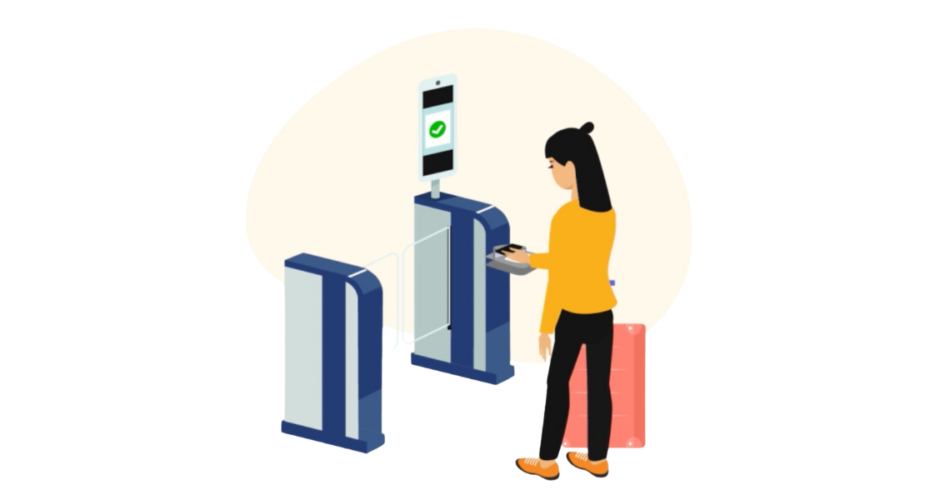Imagine this: You’re attending an event, or let’s say you’re visiting a facility, and you are no longer required to fill out long forms or stand in long queues.
Sounds quite ideal, doesn’t it? That’s exactly what QR Code check-ins offer. They offer a quick, hassle-free solution for check-ins, and these days, they’re becoming the new normal for any business or organization.
In this article, we’ll learn all about QR Code check-ins, their benefits, how to use them, and even how to set up a QR Code check-in system.
Let’s begin!
A. How are QR Code Check-ins done?
QR Code check-ins usually involve scanning a QR Code to mark your arrival or complete an entry process.
These days, QR Code check-ins are being actively used in workspaces, gyms, events, and hotels and resorts.
Instead of using traditional paper forms or registers, attendees or visitors simply scan a code, which usually takes them to a web form or app where they are required to provide all necessary information.
This method is more efficient, secure, and environment-friendly because it eliminates the need for paper forms that usually go into the trash after a while.
B. Ways in which you can use QR Codes at check-in
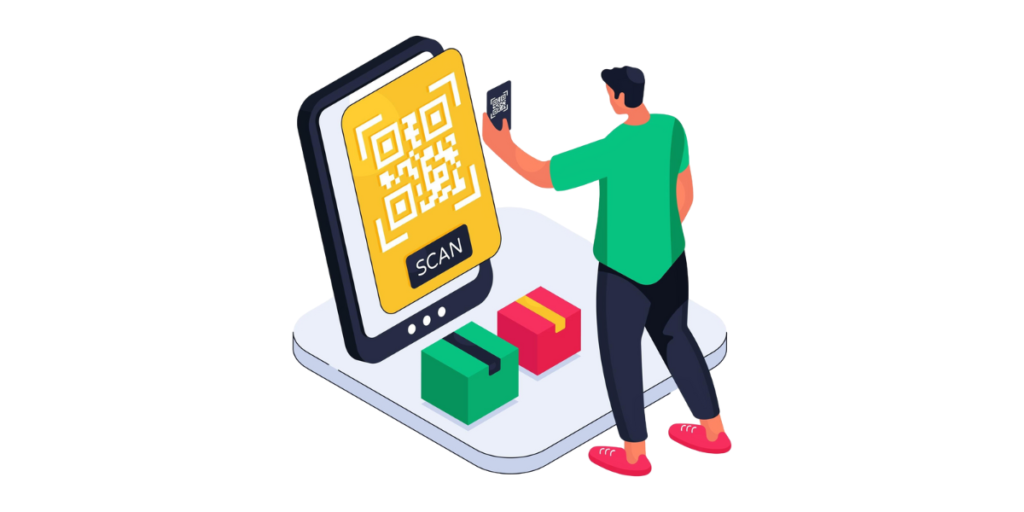
There are really two ways to set up QR Code check-ins, but it depends on your current setup.
1. Integrate QR Codes into your existing check-in system
If you already have some check-in system like a website or a mobile application for managing check-ins in place, then you only need to generate QR Codes for each entry/ guest.
To create QR Codes against each entry/attendee through your own website or application, you can use QR API.
Here’s how you can do it: You can use a QR API to generate unique QR Codes every time a guest or attendee checks in or logs into your system or website.
For example, in a gym or office, QR Codes can also be used as an electronic pass for members or employees.
Each individual’s QR Code will have his/her details so that scanning it would quickly and correctly check him/her in.
The QR API helps your system automatically generate QR Codes every time an entry or update is made on your system through an API call.
If you’re looking to execute this QR Code check-in system, we’ll cover the step-by-step process later in the article; keep reading!
2. Set up a QR Code Check-in system
If you do not already have a check-in system in place, a tool like Ticket Generator can help you generate, distribute, and verify QR-coded tickets for events.
Some of these events could include large conferences, concerts, temporary pop-up shops, exhibitions, etc. Ticket Generator is an end-to-end event management tool that can help you with that.
You can have personalized tickets for all participants. Each one of these tickets will have a unique QR Code that can be used as a distinctive identifier.
All you need to do is send these QR Code tickets to guests via e-mail or SMS (or handed out in print), which can also be done through the ticket generator app only. They can then present them at the entrance and get their tickets verified.
In fact, such a system will make the check-in process convenient and ensure safety. How? Only valid participants can enter the premises.
Both approaches offer a reliable and efficient way to manage check-ins. Choose what suits your needs best!
C. Setting up a QR Code check-in system
Now, let’s see how you can create QR Codes to streamline your check-in process.
Method 1: Setting up a QR Code check-in system via QR API for your pre-existing systems
To do that, you’ll need a suitable QR Code API provider. In this guide, we’ll be using Scanova’s QR Code API, here’s how you can proceed:
1. Go to QR Code API and sign up for the free trial
Note that you will get the first 50 API requests for free when you sign up.
2. On the page that loads, you’ll see your cycle usage with details such as total allowed requests, requests used, and days remaining. Here, you’ll also see the option Get API Key. Click on Create
Note that if you choose to sign-up via Google and click on Create, you’ll receive a 6-digit code on your email address. Copy it and paste it into the dialog box. You’ll then be able to see your API Key.
3. Copy the API key and click on Documentation on the dashboard
4. Once you scroll down a bit, you’ll see the Authorize button on the right
5. Click on the Authorize button. A window will pop open, prompting you to paste the API key into the value box. Once you’ve pasted it, click Authorize
6. Select the relevant QR Code category and click Test
7. Add the content you want to encode in the QR Code and start customizing the QR Code by specifying its size and other design parameters
8. Once you’ve finalized the QR Code content and other parameters, click on Execute
9. Here, you’ll see various responses, such as Curl, Response URL, and Response Body. When you scroll down a little, you’ll also see the image of a QR Code with encoded content
10. Now copy the Response URL and integrate it into your information system or mobile application
Note that it is always advisable to test scan the QR Code before integrating with your system.
That’s it. That is all you need to know about how QR Codes are generated programmatically via API. You can now go ahead and integrate QR Code generation with your existing systems or mobile applications.

If you do not have a check-in system in place, keep reading to learn how you can set up an awesome end-to-end QR Code check-in process with Ticket Generator.
Method 2: Setting up end-to-end QR Code check-in system
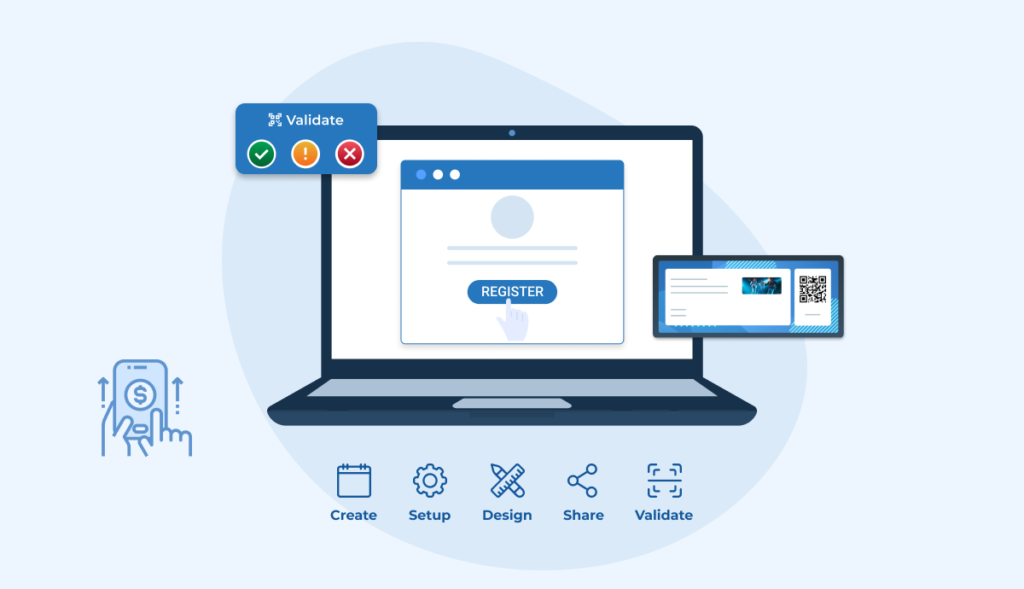
We’ll be using Ticket Generator to set up your check-in system.
Creating and distributing QR-coded tickets for smooth check-ins at your property is simple and efficient with Ticket Generator.
All you need to do is sign up on Ticket Generator (it’s free and doesn’t need your card details). Afterwards, click on “Create New Event” from the dashboard.
Add all relevant details, such as the event name, check-in dates, property description, location, and timings.
For personalized stays, you can include fields like room numbers, guest names, and contact information. Once done, click “Create”.
This step helps structure your ticketing system around your property’s needs.
I. Design your tickets
The key is to create visually appealing tickets to elevate the guest experience. Ticket Generator offers the option to customize your ticket design, too.
i. Upload your own design
If you already have a design template, you can upload it. Then, you can customize the layout with your branding and include a QR Code with a unique ID.
ii. Create a design from scratch
You can use the “Edit Design” option to create a ticket using Ticket Generator’s standard tool.
You can add:
- Your property’s logo
- Custom background images (e.g., scenic property views or themed visuals)
- Variable details such as guest names, room numbers, or booking IDs by clicking the “+” button.
iii. Pre-designed templates
The third option for quick ticket generation is to choose a ticket design from a variety of ready-made templates.
Click on “Select Template,” and your information will automatically populate the selected design.
Once done, click “Preview” to review the ticket design.
II. Choose a delivery method
After designing the tickets, you need to decide how you’ll distribute them to your guests. Ticket Generator offers three options:
i. Generate a registration form link
You can create a mobile-friendly landing page to collect guest check-in details. This page will have all the necessary details.
You can add images, your property description, and customizable form fields for booking preferences.
You can customize the button text to make it engaging (something like “Reserve Your Spot”).
ii. Generate and download tickets
You can also create printable tickets in PDF format. This option is perfect if you prefer to hand out tickets during check-in or email them as attachments.
iii. Send tickets digitally
The third and last way is to distribute the tickets digitally via email, SMS, or both.
- Email Only: Here, you can upload a file with guest email addresses in CSV, XLS, or XLSX format or manually enter the addresses. Tickets will be sent to each email automatically.
- SMS Only: Here, you can send tickets directly to guests’ mobile numbers (up to 1,000).
- Email and SMS: Using this option you can share tickets through both methods for added accessibility and convenience.
This flexibility ensures your guests receive their QR-coded tickets in a way that’s convenient for them.
III: Validate tickets for seamless check-ins
The last and final step in this process would be to use the Ticket Validator app to streamline the check-in process.
You can download the app from the App Store or Play Store. All you need to do is:
- Log in with your Ticket Generator credentials.
- Select the event or booking for which you want to validate tickets.
- Tap the Scan QR Code button to begin validating tickets.
For high-volume check-ins, you can assign multiple coordinators to assist. To do so, you can:
- Go to the “Manage Event” section in Ticket Generator.
- Select the event and click on the “More” menu (three horizontal dots).
- Then, click on “Add/Edit Coordinator” and add their email addresses.
Coordinators will receive an email invitation, enabling them to log in to the app and start scanning tickets.
With Ticket Generator, you can efficiently manage guest check-ins at your hotel, resort, or B&B.
From designing tickets to verifying stays, the process ensures a professional and smooth experience for your guests.


D. Where are QR Code Check-ins used?

1. Workplaces: For employee attendance tracking and visitor logging
If you’ve been to a corporate park recently or even an office complex, you’ll find QR Code check-ins a common site.
Offices do not use manual sign-in sheets or outdated punch cards anymore.
QR Code check-ins offer a streamlined employee attendance system by allowing workers just to scan a QR Code at entry points and mark their presence.
- For Employees: The process is quick and ensures accurate time tracking. Some systems integrate with payroll software, making it easy to calculate work hours and overtime, even more so for external payroll outsourcing services.
- For Visitors: Offices often use QR Code systems to log visitor details. Visitors are given their QR Code-based passes, and a quick scan can collect names, contact info, and the purpose of the visit.
This ensures better security because QR Codes are unique to each visitor.
2. Events: For seamless entry to concerts, conferences, and trade shows
QR Codes transform event management by providing faster entry to events. The attendees are provided with QR Code tickets.
These tickets can be scanned at the entry gates, and instant entry is provided if the QR ticket is valid. This reduces long queues and helps reduce pressure at entry points.
What’s better is that the QR Code can even be directed to personalized timetables, exhibitor information, or promotions. These small squares can hold so much information it’s really surprising.
The best part is organizers can track attendance in real time, monitor session participation, and collect valuable feedback.
3. Gyms and fitness centers: For member check-ins and session bookings
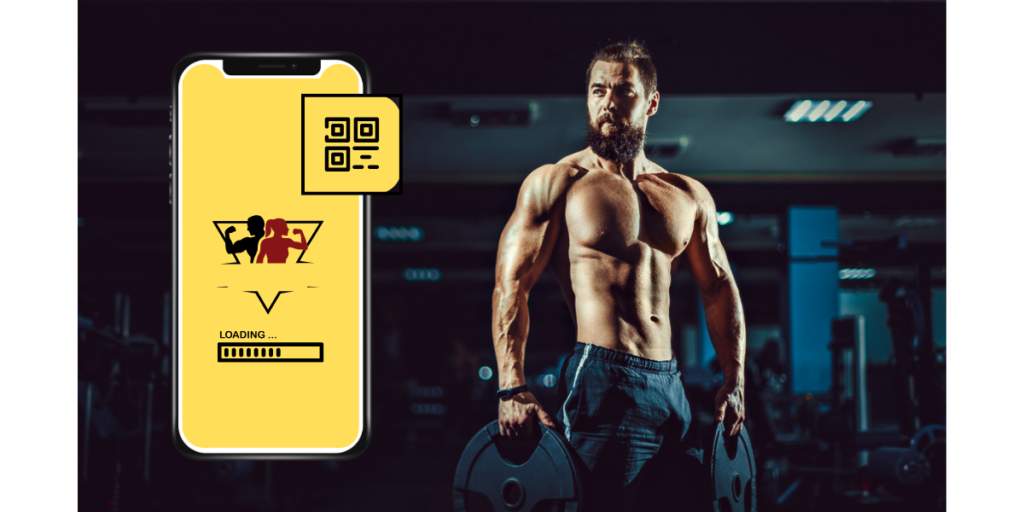
Big brands like Cult.fit and Golds Gym offer QR Code check-ins into their gyms and training sessions.
Members scan their unique QR Codes at the entrance to mark their attendance. This eliminates any need for staff intervention and is very secure.
“A unique QR Code will be present on the app under the ‘Cult’ tab -> ‘Gym’ section; you need to scan it on the device present at the reception or entry before entering the gym. Yes, it is mandatory to check in and is super easy.” said Cult.fit in a statement.
Not only that but if you look around your gyms these days, you’ll find QR Codes for class schedules and other fitness activities.
Members or visitors can book classes or training sessions with a single scan.
Did you know that these membership QR Codes can also lead to workout tutorials, diet plans, or progress-tracking apps? It’s safe to say that QR Code check-ins enhance the overall member experience.
4. Hotels and resorts: For quick guest registration
The hospitality industry thrives on providing smooth and personalized experiences, and QR Codes fit right in.
Guests can scan a QR Code upon arrival to access digital registration forms, skipping the traditional paperwork that was there.
You can find QR Codes put up in rooms that guide guests to amenities, room service menus, or local attraction guides.
5. Government services: For public health and security
Governments everywhere are using QR Code check-ins to improve public services and manage entry at high-security zones.
Did you know that after the parliament security breach incident, the visitor’s pass now contains QR Codes that are scanned at the respective Lok Sabha /Rajya Sabha counter at the South Utility Reception, along with the original Aadhaar card for spot verification?
Source: TheHinduBusinessLine
QR Code check-ins became widespread during the pandemic. This helped authorities track virus exposure and control the spread of this deadly virus.
Even public services like libraries, museums, and parks now use QR Codes to manage visitor flows and collect feedback.
6. Healthcare: Patient check-ins and health data collection
In healthcare, accuracy and speed are critical. QR Code check-ins provide a secure and efficient solution for this.
Patients can now scan a QR Code to access digital forms, reducing wait times and paper usage.
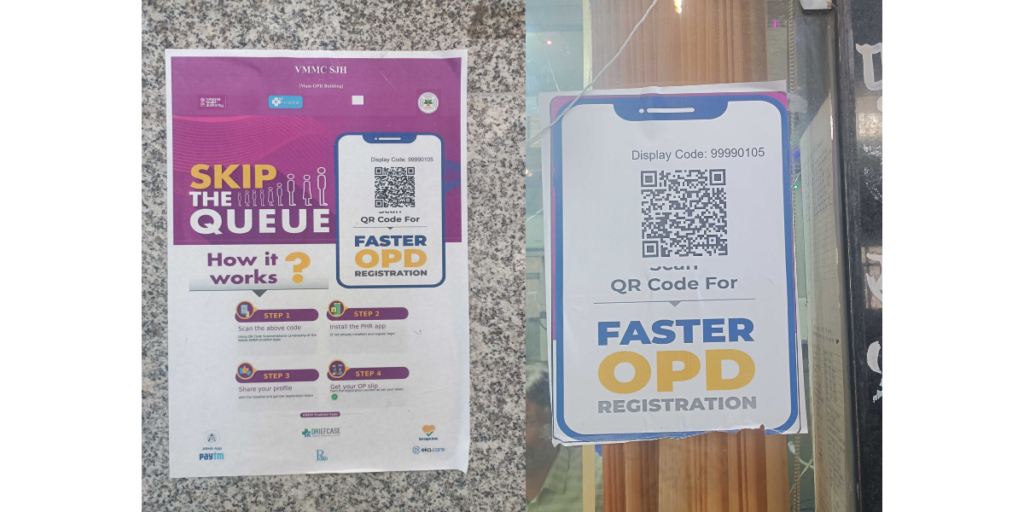
Did you know that the Safdurjung Hospital in Delhi now uses QR Codes for OPD registrations, eliminating long queues at the reception and offering a smoother registration and check-in process for the patients?
During the pandemic, QR Codes became essential for submitting health declarations or vaccination proof.
These days, QR Codes linked to booking systems make it easy for patients to check in for appointments or reschedule them.
The perk here is that the information collected through QR Codes is securely stored, ensuring compliance with healthcare privacy laws.
7. Education: For attendance and event participation
Schools and colleges are using QR Codes to make it easier to track student attendance in classes.
The student scans the QR Code to mark their attendance. This makes attendance tracking efficient and easy for the teachers.
Using QR Code Check-ins, the entry process becomes more convenient for school events, alumni meet, parent-teacher conferences.
This even eliminates the risk of unauthorized entries and any event crashing instances.
8. Transportation and Travel: For ticketing and boarding
From buses to flights, QR Codes have transformed the travel experience. These days, you don’t need to wait in long queues for check-ins and verifications.
Travelers can scan their unique QR Codes to access tickets, board vehicles, or enter stations.
DigiYatra is a very good example of QR Code check-ins. All one needs to do is scan their boarding pass in the DigiYatra app, and they will get a QR Code. This QR Code is all they need to show at checkpoints for convenient entry.
QR Codes can link to live schedules or route maps, helping commuters stay informed. Many airlines are even using QR Codes to provide passengers with real-time baggage updates.
9. Entertainment and Leisure: For ticketing and memberships
Amusement parks, cinemas, and leisure clubs are actively using QR Code check-ins to enhance the fun
Visitors use QR Code tickets to enter attractions quickly. These check-ins even unlock VIP access, discounts, or behind-the-scenes tours.
E. Why are QR Code check-ins so popular?
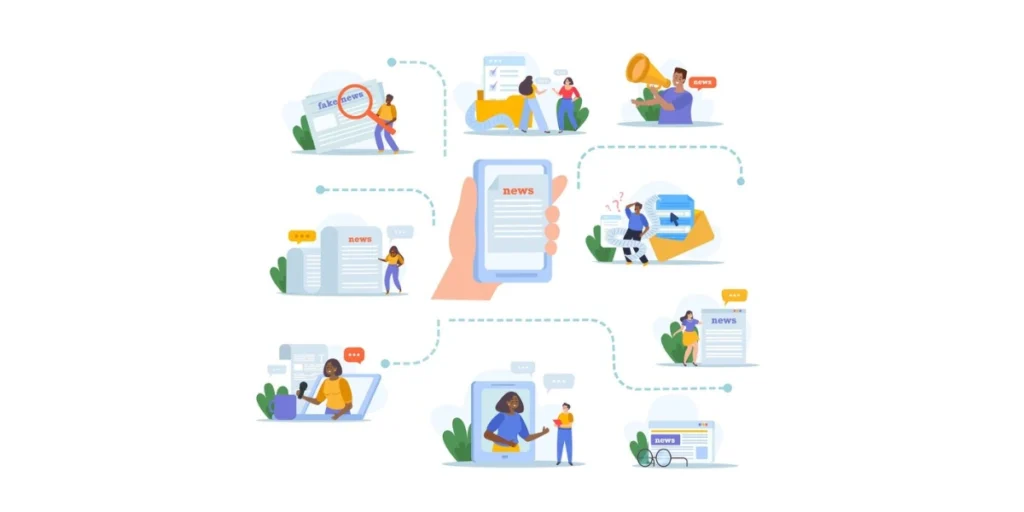
1. Speed and efficiency
With just a scan, you can check in within seconds. So, there is no waiting and no more typing or filling long forms. And no more maintaining registers.
2. Contactless safety
COVID-19 highlighted the need for contactless systems. QR Codes let you check in without touching shared surfaces. This feature has become quite important in these times.
3. Accurate data collection
Digital forms reduce errors. The information collected is automatically saved, eliminating the need for manual data entry. It is a more reliable solution than the traditional methods.
4. Eco-friendly
By replacing paper-based systems, QR Code check-ins are helping businesses reduce waste. No need to print forms or fill up registers that mostly end up in waste.
5. Versatility
Whether for attendance tracking, guest lists, or health declarations, QR Codes adapt to multiple use cases.
F. Tips for Successful QR Code Check-Ins
- Place QR Codes Strategically: Ensure that the QR Codes are easily visible and accessible.
- Provide Instructions: Add a short guide on how to scan the QR Code. (Not everyone knows how QR Codes work)
- Ensure Internet Connectivity: Visitors need Internet access for the process to work. Making the internet accessible will make the whole process smoother,
- Test, Test, Test: Always test the system beforehand to iron out any issues.
G. FAQs: QR Code Check-Ins

1. What are QR Code check-ins, and how do they work?
QR Code check-ins are a digital solution for tracking attendance or registering visitors by scanning a QR Code.
Guests or employees scan the QR Code using their smartphones or a dedicated app. This redirects them to a form, attendance tracker, or reservation system, where they can fill in their details or verify their identity.
Once scanned, the system logs the check-in automatically.
2. What are the benefits of using QR Code check-ins?
QR Code check-ins offer several benefits:
- Speed and efficiency: Guests can check in within seconds by scanning the code.
- Contactless experience: Reduces the need for physical interactions, enhancing safety.
- Accurate data collection: Details are digitally logged, reducing errors in manual entry.
- Eco-friendly: Eliminates the need for paper-based forms.
- Customizable: QR Codes can be tailored for different purposes, such as event entry, visitor management, or hotel check-ins.
3. Do I need special software to implement QR Code check-ins?
Not necessarily. You can use a QR Code generator like Scanova to create QR Codes and link them to forms, websites, or apps.
For event-specific needs, tools like Ticket Generator can create and distribute QR-coded tickets.
Depending on your use case, you might also need a validation app, such as the Ticket Validator, to scan and verify QR Codes during check-ins.
4. Are QR Code check-ins secure?
Yes, QR Code check-ins are secure when implemented correctly. The data collected is encrypted and stored in secure systems.
Access controls can also limit who can view or use the data. To enhance security, always use trusted QR Code generation platforms and validation apps to minimize risks like phishing or unauthorized access.


H. The Future of QR Code Check-ins
As the technology continues to evolve, QR Code check-ins will become smarter.
Integration with facial recognition, AI-driven data analysis, and blockchain security to name a few are some of the possibilities. They’re not just a fad; they are the future.
QR Code check-ins transform how we manage attendance and registration. They’re fast, easy, and adaptable to virtually any industry.
Whether you’re a small business or a large organization, implementing a QR Code check-in system can save time, enhance security, and impress your visitors.
